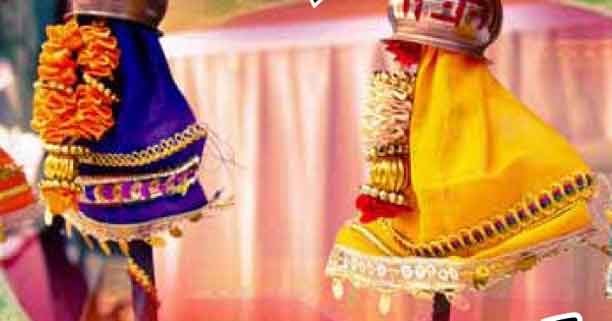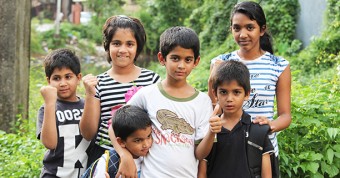A New Year, stomach A New Start
Do you want to get married, pilule start a business, drugs invest in a venture or begin a new career? If you’re a Hindu believer – or perhaps just someone open to the universe’s karma – now’s the time to do it. Why? Because we’re about to celebrate Gudi Padwa, the name given to the Hindu New Year in Goa and other parts of India. And of all the things that can be said about Gudi Padwa, perhaps none is more important than the auspicious timing it affords to all those hankering for a new life adventure.
Well, on second thought maybe there is something more important.
“This day Almighty God (Brahma) created the whole Universe (Brahmhand),” wrote reader Rahul Dubey on the Goa Streets Facebook page.
This year, the big day falls on March 31 (since we’re talking about the Hindu calendar and not the Gregorian one we all use on a daily basis, the holiday falls on a different ‘Gregorian’ date each year).
First, for all you tourists, Catholics, gringos, Scandinavians, Russians and other non-Hindus out there, don’t get too excited. This is not a massive party with drinking and dancing at every corner.
Instead of stars and flashing fairy lights, what you will see outside most Hindu homes in Goa and neighbouring states is a pole sticking out of the window with a brightly-coloured silk-cloth-covered tumbler at its free end, decked in flowers.
By the Hindu lunar calendar, the happy day is the first day of the bright phase of the moon (i.e., the day after a new moon of the first month, Chaitra). The following nine days and nights (or Navratra) are also auspicious – a good time to tie the knot or open a new store or begin your doctoral program in Hindu theology.
Neighbouring states celebrate it as Ugadi (Andhra, Karnataka) and in Konkani, it’s also called Sansaar Padwo. I’m told in faraway Kashmir the Pandits call it Navreh and the Sindhis call it Cheti Chand. In offices around the country, women employees will wear yellow. In Assam, and other states of the north east, people will celebrate Bihu.
Astrologically, the sun is supposed to be in the first point of Aries. This is considered to be the beginning of spring (the Vasant Ritu). People of ancient Egypt knew this and Nowruz, literally “New Day”, is celebrated as the Persian New Year. Indian Parsis celebrated Nowruz last week.

Women celebrating Gudi Padwa
Gudi Padwa is a low-key harvesting festival, unlike the boisterous Holi or the glamorous Diwali. It marks the end of one agricultural harvest (the end of the Rabi crop) and the beginning of a new one. Hardcore Hindus will tell you that according to the Brahma Purana, this is the day on which Brahma created the world after the deluge and therefore time began to tick from this day forth.
Back to our bedecked pole-out-the-window. The silk/brocade cloth fluttering over the upside down tumbler at the tip will have for company some sugar crystals, neem leaves, a twig of mango leaves and a garland of red flowers. The inverted tumbler or pot might be of silver or copper or steel (for those of us who are poor or cheap), but always metal. The whole contraption has to be noticed by neighbours and passers-by, hence it’s hoisted as high as possible.
Early on Gudi Padwa morning, courtyards in village houses will be swept clean and plastered with fresh cow-dung. In cities, people do some spring cleaning. Women and children work on intricate rangoli designs on their doorsteps, the vibrant colours mirroring the burst of colour associated with spring. Everyone dresses up in new clothes and it is a time for family gatherings. Like all Hindu festivals, this one has more social than religious significance.

Gudi Padwa Platter
I remember, as a child, being woken up early in the morning, bathed and dressed in new clothes, made to taste a bit of bitter neem-leaves’ paste. It was ground with jaggery and tamarind to make it palatable. Neem is supposed to purify the blood and strengthen the body’s immune system against diseases. The ancients prescribed the horridest concoctions for good health. And we lesser humans consumed them without questioning. But with loud protesting whimpers. What was better was the feast that followed: shrikhand (a sweet made of hung curd) and Poori (a fried bread; if you haven’t tasted it, you haven’t lived). We Goans also love our Kanangachi Kheer, a dessert made of sweet potato, coconut milk, jaggery, and rice flour.
If there were prayers to be said, I can’t remember any. But I recall that we children had to go to neighbours’ homes and touch the feet of the elders in order to get their blessings. Blessings frequently came in the form of ladoos or barfis and landed on our palms, to be gobbled instantly.
I used to love festivals for the rituals (no two festivals have the same rituals) and the food (each festival has its own ‘special’ foods). The vatlee daal, a sweet and sour salad made of soaked pulses, some scraped fresh coconut, chopped green chillies, and seasoned with mustard seeds, asafoetida and curry leaves… is to die for.

And whilst I am relishing a chilled glass of home-made, raw-mango based, saffron-flavoured panha, I wish you: happy new year.




